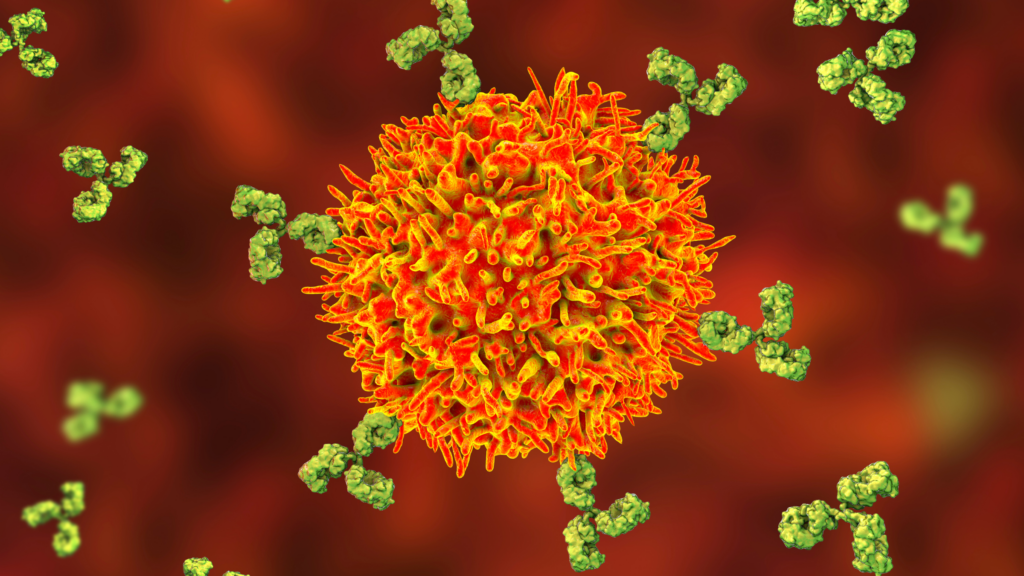May 13, 2025
Pair of IAVI publications demonstrate the potential value of bnAbs for HIV prevention
Cost-effectiveness and acceptability in vulnerable populations assessed for HIV bnAbs.

Access, acceptability, and effectiveness are top of mind as scientists continue to search for new methods to address remaining gaps in HIV prevention. HIV broadly neutralizing antibodies (bnAbs) that are currently in development may present a promising future approach due to their ability to block multiple strains of HIV. They offer several other potential benefits: bnAbs are likely to be well-tolerated, will help mitigate the risk of antiretroviral resistance, and can likely induce four months of protection with just one discreet dose[1].
Two recently published papers in PLOS One assess the feasibility of HIV bnAbs in a variety of settings and populations.
A cost-effective option to prevent vertical HIV transmission
Despite global advances in maternal antiretroviral therapy, approximately 120,000 children still acquired HIV in 2023[2]. New interventions to prevent peri- and post-natal transmission of HIV are, therefore, urgently needed. One option that IAVI and our partners are exploring is using HIV bnAbs to protect infants during birth and breastfeeding.
In new research published in March, IAVI scientists and our partners projected the clinical impact and cost-effectiveness of adding bnAb prophylaxis to existing HIV prevention strategies for infants in Côte d’Ivoire, South Africa, and Zimbabwe. Offering bnAbs to all infants, regardless of HIV exposure, could reduce pediatric HIV infections by 10–42% annually — with the greatest benefit and cost-effectiveness seen in high-prevalence settings like South Africa. Indeed, when maternal HIV prevalence exceeds approximately 15% and bnAbs have at least 60% efficacy, they were projected to cost less or equal to US$20/dose. Findings varied in countries with lower HIV prevalence and GDP per capita, like Côte d’Ivoire and Zimbabwe, where it would be more cost-effective to target only HIV-exposed infants.
IAVI collaborated with Massachusetts General Hospital, Stellenbosch University, New York Presbyterian/Weill Cornell Medical Center, University of Pretoria, and more on this study. It ultimately emphasizes the possible impact of bnAbs where maternal HIV detection and treatment are limited if integration with broader health services is successful.
Acceptability in vulnerable populations
HIV bnAbs may also serve the prevention needs of other populations. The prevention toolbox is expanding, with new options for oral and injectable PrEP, bnAbs, and eventually HIV vaccines. New research conducted by IAVI scientists and published in PLOS One in April examined the acceptability of bnAbs for prevention with potential end-users. Vulnerable groups in Chennai, Delhi, and Mumbai, India, were convened for 36 focus group discussions and 51 in-depth interviews. Additionally, the study team ran 15 simulated behavioral experiments to delve deeper into factors influencing preference construction and the gaps between intention and action. Overall, the study found that the key attributes influencing acceptability were product efficacy, frequency of administration, and side effects. End-users most preferred a shot every 3-6 months administered by a community-based facility. When presented with hypothetical product profiles, end-users identified non-antiretroviral options as delivered by injection every 3 months as the preferred product profile. This research found that HIV bnAbs were an acceptable product across all populations participating in the study.
Taken together, these two publications demonstrate the potential of bnAbs as a powerful tool for HIV prevention. With the capacity to be both cost-effective and a preferred option among end-users, HIV bnAbs are well worth additional investment to ensure that populations at risk from HIV can benefit from this prevention option.
Both publications were made possible by the United States President’s Emergency Plan for AIDS Relief (PEPFAR) through the United States Agency for International Development (USAID).
Further reading
Alba C, Malhotra S, Horsfall S, Barnhart ME, Bekker A, Chapman K, et al. (2025) Cost-effectiveness of broadly neutralizing antibodies for HIV prophylaxis for infants born in settings with high HIV burdens. PLoS ONE 20(3): e0318940. https://doi.org/10.1371/journal.pone.0318940
Mukherjee J, ul Hadi S, Chakrapani V, Rawat S, Srikrishnan AK, Mahendra V, et al. (2025) Acceptability of broadly neutralizing antibodies (bNAbs) for HIV prevention among vulnerable populations in India: Findings from a qualitative study. PLoS ONE 20(4): e0321725. https://doi.org/10.1371/journal.pone.0321725
[1] https://www.iavi.org/wp-content/uploads/2025/01/iavi_fact_sheet_antibodies_for_hiv_prevention.pdf
[2] https://crossroads.unaids.org/wp-content/uploads/2024/09/GAU-2024-Full-report_En.pdf